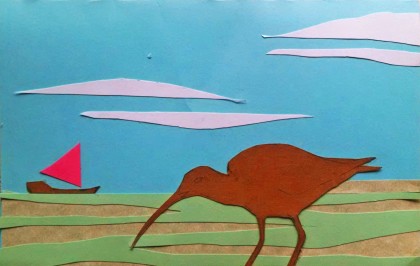
I just returned from a NJ Audubon expedition to the wilderness coast of northern Brazil. I was fortunate to be invited to join a small team of biologists from the U.S. and Brazil to participate in an ongoing research project in one of the most important shorebird wintering areas in the Western Hemisphere.
The team’s research focus is semipalmated sandpiper, a shorebird in decline with major wintering populations in Brazil.
The field site is a two-mile long sand spit that snakes northward from a mangrove peninsula into a broad coastal bay.
This stark setting makes for ideal shorebird roosting habitat because it is isolated from predators and remains (barely) out of the water during most high tides.
But this setting also makes for challenging working conditions, given that there is no shade or shelter of any kind. And the constant wind makes for constant blowing sand.
Fortunately, we had a mother ship. The team hired the Universo, a 50′ cargo vessel, to transport and house us during our sandspit sojourn. The three-man crew were crucial members of the team who assisted in many ways, including provisioning us with fresh fish from the surrounding waters every day.
The area teems with shorebirds and waterbirds, migrant and resident alike. At low tide the birds spread out to feed across vast sand and mudflats.
At high tide, they flock up along the shores of the spit to wait for their feeding areas to be exposed again.
We did our bird catching during high tides at night when the sandpipers couldn’t see the mist nets we opened to catch them.
We worked through the dark hours banding the large numbers of birds we caught in the nets.
The only company we had on the sand spit were fishermen who would anchor next to us and fish for a few tide cycles.
Crabs, shrimp and fish were in abundance and appear to support a large artisanal fishery.
For eleven days a little sand spit that hardly appears on maps was our whole world. And it seemed like the whole world’s supply of sandpipers, whimbrels and willets might be there with us. It is breathtaking to comprehend that we only had a pinhole view of an immense coastal wilderness full of many more places like it.